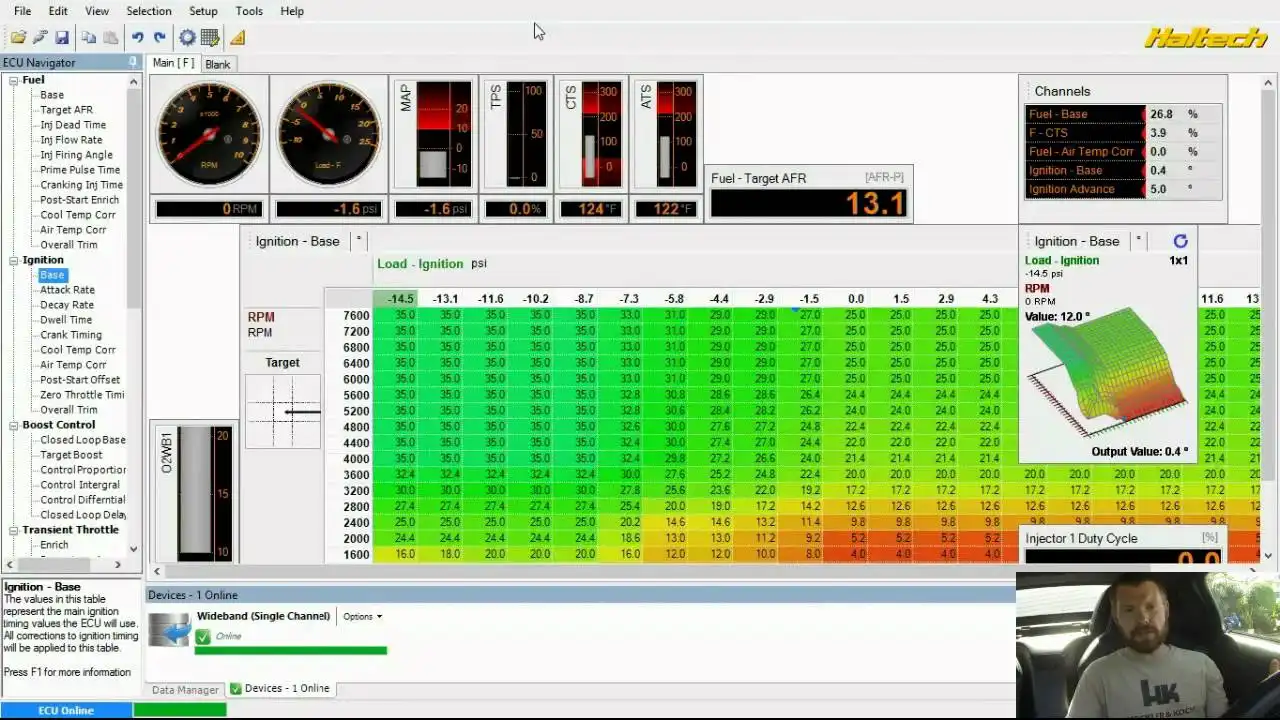The Impact of Vacuum Leaks on Engine Performance: Diagnosis & Repair
An OBD2 scanner is essential for diagnosing engine problems. Learn how vacuum leaks can cause a variety of engine performance problems. Learn how to diagnose and repair vacuum leaks to restore smooth and efficient engine operation. Identify and eliminate vacuum leaks for optimal performance.

Understanding Vacuum Leaks Effects on Engine Performance
Alright, let's talk vacuum leaks. These sneaky little devils can wreak havoc on your engine's performance, causing everything from rough idling to poor fuel economy and even a loss of power. But what exactly is a vacuum leak, and why is it so important to fix it? Simply put, a vacuum leak is an unmetered entry of air into your engine's intake manifold. Your engine is designed to draw in a specific amount of air, and the ECU (Engine Control Unit) calculates the amount of fuel needed based on this metered airflow. When air leaks in from somewhere it shouldn't, it throws off this delicate balance, leading to a variety of problems.
Common Causes of Vacuum Leaks Engine Problems
So, where do these vacuum leaks come from? Here are some of the most common culprits:
- Worn or Cracked Vacuum Hoses: These are the most frequent offenders. Over time, the rubber hoses can dry out, crack, and develop leaks. Inspect them carefully for any signs of damage.
- Intake Manifold Gasket Leaks: The intake manifold gasket seals the manifold to the cylinder head. If this gasket fails, it can create a significant vacuum leak.
- Throttle Body Leaks: The throttle body controls the amount of air entering the engine. Leaks around the throttle body can disrupt the airflow and cause issues.
- PCV Valve Leaks: The PCV (Positive Crankcase Ventilation) valve helps regulate crankcase pressure. A faulty PCV valve or its associated hoses can cause vacuum leaks.
- Brake Booster Leaks: The brake booster uses vacuum to assist with braking. A leak in the booster or its vacuum line can affect both braking performance and engine operation.
- EGR Valve Leaks: The EGR (Exhaust Gas Recirculation) valve recirculates exhaust gases back into the intake manifold. A leaking EGR valve can cause vacuum leaks.
- Fuel Injector O-Rings: The O-rings sealing the fuel injectors to the intake manifold can dry out and crack, leading to vacuum leaks.
Symptoms of Vacuum Leaks Recognizing the Signs
How do you know if you have a vacuum leak? Keep an eye out for these common symptoms:
- Rough or Erratic Idling: This is one of the most noticeable symptoms. The engine may idle unevenly or stall.
- Poor Fuel Economy: The engine has to work harder to compensate for the extra air, leading to decreased fuel efficiency.
- Loss of Power: The engine may feel sluggish or lack its usual power, especially at low speeds.
- Hesitation or Stumbling During Acceleration: The engine may hesitate or stumble when you try to accelerate.
- Check Engine Light: A vacuum leak can trigger the Check Engine Light. Common codes include those related to lean conditions (e.g., P0171, P0174).
- Hissing Sound: You might hear a hissing sound coming from the engine bay, especially when the engine is running.
Diagnosing Vacuum Leaks Finding the Source
Okay, so you suspect you have a vacuum leak. How do you find it? Here are a few methods you can use:
- Visual Inspection: Start by visually inspecting all vacuum hoses, connections, and gaskets. Look for cracks, breaks, or loose fittings. This is often the easiest and most effective way to find obvious leaks.
- Smoke Test: This is a professional method that involves using a smoke machine to introduce smoke into the intake manifold. The smoke will escape from any vacuum leaks, making them easy to spot. Many shops offer this service at a reasonable price.
- Carburetor Cleaner/Spray Test: With the engine running, spray small amounts of carburetor cleaner or starting fluid around potential leak areas, such as vacuum hoses, intake manifold gaskets, and throttle body. If the engine RPMs increase, you've likely found a leak. Important: Be very careful when using flammable sprays around a hot engine. Keep a fire extinguisher nearby and avoid spraying near ignition sources.
- OBD2 Scanner: Use an OBD2 scanner to check for codes related to lean conditions or other vacuum leak-related issues. While the scanner won't pinpoint the exact location of the leak, it can provide valuable clues.
Repairing Vacuum Leaks Fixing the Problem
Once you've located the vacuum leak, it's time to fix it. Here's how to address some common issues:
- Replacing Vacuum Hoses: This is often the simplest and most common repair. Replace any cracked, worn, or damaged vacuum hoses with new ones. Make sure to use hoses that are the correct size and material.
- Tightening Connections: Sometimes, a vacuum leak is simply due to a loose connection. Tighten any loose hose clamps or fittings.
- Replacing Gaskets: If the leak is coming from a gasket, such as the intake manifold gasket, you'll need to replace the gasket. This can be a more involved repair, but it's necessary to seal the connection properly.
- Replacing the PCV Valve: If the PCV valve is faulty, replace it with a new one. Also, inspect the PCV valve hose for cracks or damage.
Product Recommendations for Vacuum Leak Repair
Here are a few product recommendations that can help you diagnose and repair vacuum leaks:
Vacuum Hoses
When replacing vacuum hoses, it's important to choose high-quality hoses that are resistant to heat, oil, and other contaminants. Here are a couple of options:
- Gates Rubber Vacuum Hose: Gates is a well-known and trusted brand in the automotive industry. Their rubber vacuum hoses are durable and long-lasting. A 25-foot roll of 3/16" hose typically costs around $20-$30.
- Silicone Vacuum Hose Kit: Silicone hoses offer even better heat and chemical resistance than rubber hoses. They're also more flexible and less likely to crack. A universal silicone vacuum hose kit, with various sizes, can range from $30-$50.
Carburetor Cleaner/Starting Fluid
When using carburetor cleaner or starting fluid to locate vacuum leaks, be sure to use a product that is safe for use on automotive components. Here are a couple of options:
- CRC Carb & Choke Cleaner: CRC Carb & Choke Cleaner is a popular choice for cleaning carburetors and throttle bodies. It can also be used to locate vacuum leaks. A 12-ounce can typically costs around $5-$10.
- Starting Fluid: Starting fluid can also be used to locate vacuum leaks. However, it's important to use it sparingly and avoid spraying it near ignition sources. A 11-ounce can of starting fluid typically costs around $5-$10.
OBD2 Scanners
An OBD2 scanner is an essential tool for diagnosing engine problems, including vacuum leaks. Here are a couple of options:
- Autel MaxiCOM MK808: This is a mid-range OBD2 scanner that offers a wide range of features, including code reading, live data streaming, and bi-directional control. It's a great option for both DIYers and professional mechanics. This scanner ranges from $250 to $350.
- BlueDriver Bluetooth Professional OBDII Scan Tool: This scanner connects to your smartphone via Bluetooth and provides access to a wide range of diagnostic information. It's a great option for DIYers who want a portable and affordable scanner. This typically costs around $120.
Preventing Future Vacuum Leaks Maintenance Tips
The best way to deal with vacuum leaks is to prevent them from happening in the first place. Here are a few maintenance tips:
- Regularly Inspect Vacuum Hoses: Inspect your vacuum hoses at least once a year for cracks, wear, and damage. Replace any hoses that are showing signs of deterioration.
- Use High-Quality Hoses: When replacing vacuum hoses, use high-quality hoses that are resistant to heat, oil, and other contaminants.
- Tighten Connections: Regularly check and tighten hose clamps and fittings.
- Replace Gaskets When Necessary: If you're working on your engine, replace gaskets when necessary to ensure a proper seal.
Vacuum leaks are a common engine problem, but they're usually not too difficult to diagnose and repair. By following the tips in this guide, you can keep your engine running smoothly and efficiently.
:max_bytes(150000):strip_icc()/277019-baked-pork-chops-with-cream-of-mushroom-soup-DDMFS-beauty-4x3-BG-7505-5762b731cf30447d9cbbbbbf387beafa.jpg)






